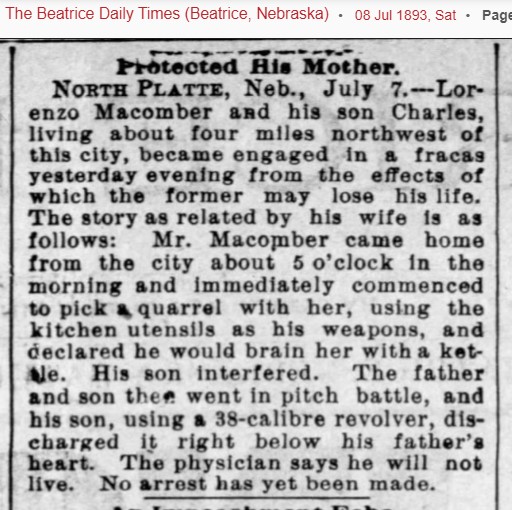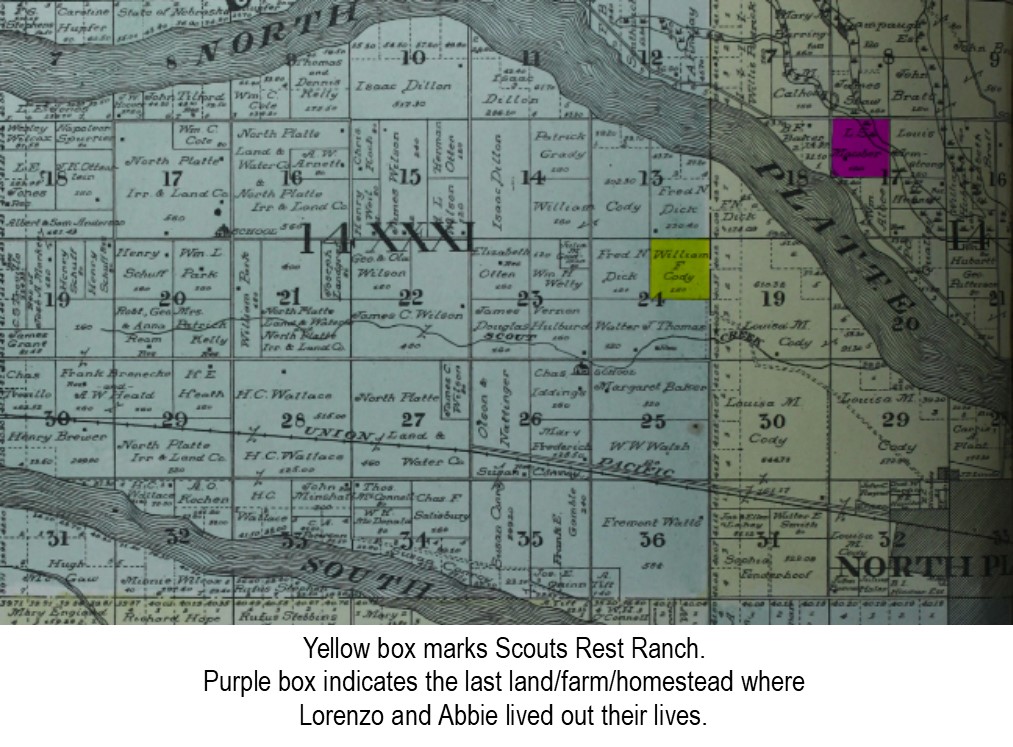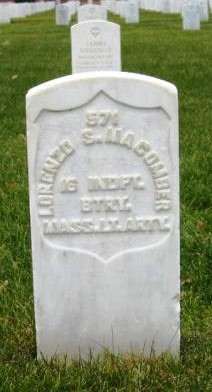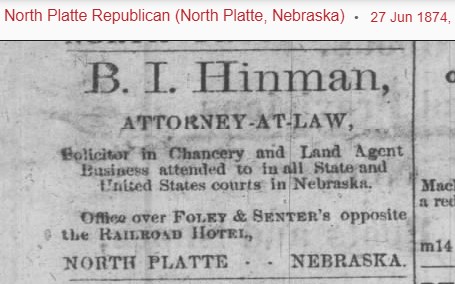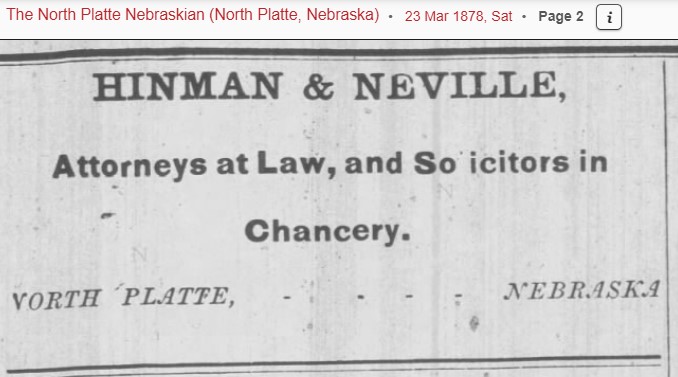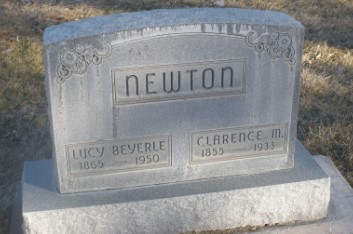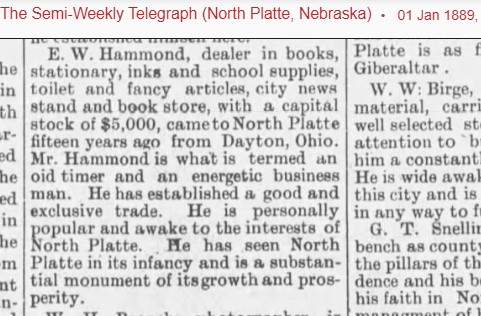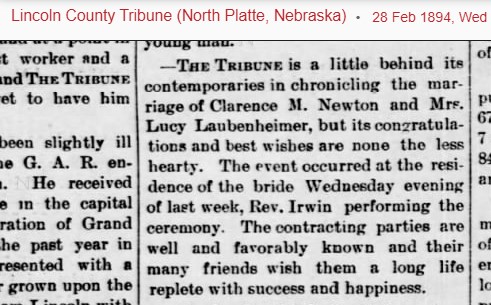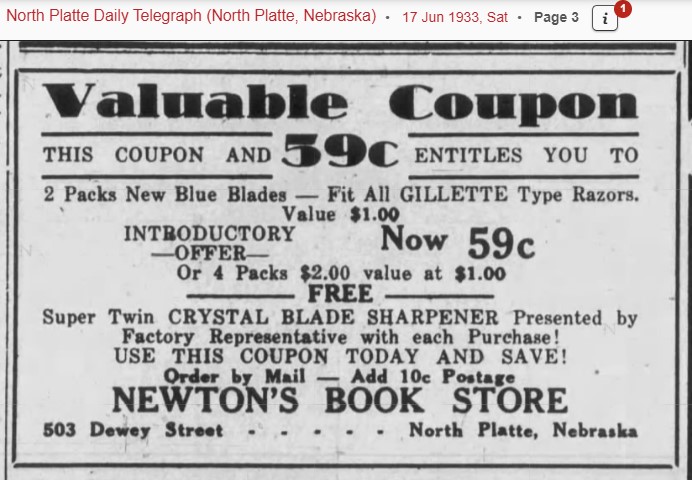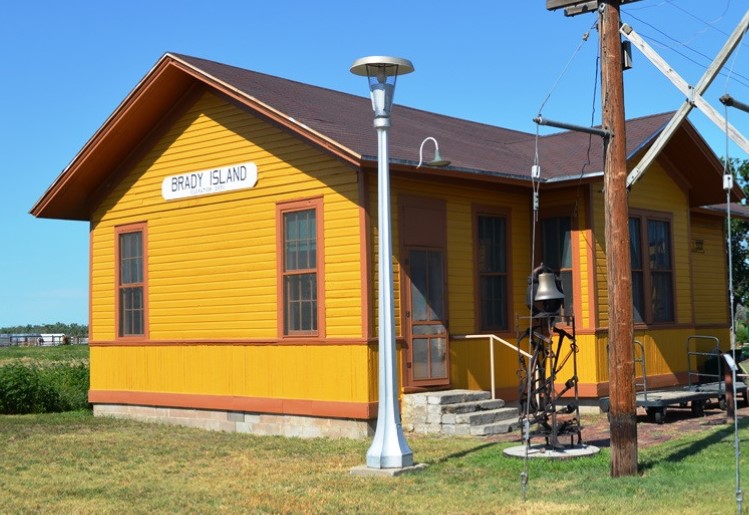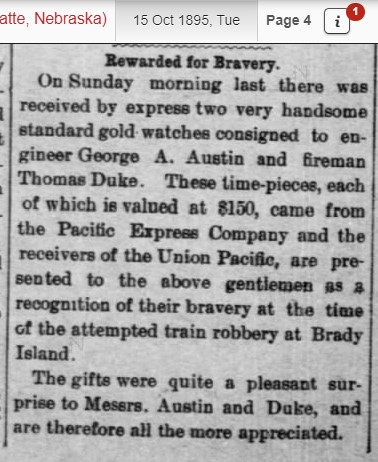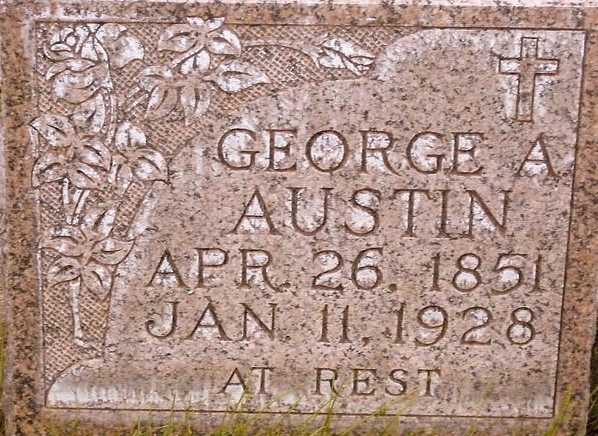Originally published to facebook.com/NorthPlattePL on July 22, 2022.
Welcome back to another Facebook Friday History!
Today we look at Alexander Frederick Streitz, North Platte Mayor and early pioneer Pharmacist/druggist/chemist.
Alexander Streitz was born on May 10, 1860 to Ferdinand and Hannah (Fest) Streitz in Michigan. Ferdinand immigrated to America from Germany. The Streitz family settled first in Wisconsin, then moved to Minnesota, then Michigan. In the fall of 1860, the family moved to Omaha, Nebraska. Ferdinand was a freighter and made four overland trips from Omaha to Virginia City, Montana. Alexander was the first child of seven, born to Ferdinand and Hannah.
Alexander grew up in Omaha, attending public schools. Alexander was an apprentice in a local drug store for four years, and in 1884, Alexander graduated from the Philadelphia College of Pharmacy in Philadelphia, Pennsylvania.
In the Spring of 1885, Alexander returned to Nebraska and opened one of the first Drug Stores in North Platte, Nebraska. He found a partner (James LeFils) and opened LeFils & Streitz Druggists store. Within two months, Streitz became the sole proprietor or Streitz Drugs.
In 1885, Streitz was elected county commissioner. Throughout his life, he held many public offices, including serving three years on the state board of pharmacy.
Alexander Frederick Streitz married Grace A. Stewart on October 30, 1887. They had two children and the family lived on the corner of Fifth and Sycamore streets:
- 1. Ruth Streitz (1892-1984). Ruth was well educated. She never married and passed away in Florida.
- 2. Ferdinand Streitz (1894-1987). Ferdinand was a World War I Army Veteran. He was in the motel business and was also a realtor. He did marry and had one daughter. He died in Phoenix, Arizona.
Alexander ran the drug store as the primary pharmacist until 1908, when he sold the store due to ill health. Right before he sold the store, Alexander was elected as Secretary to the School Board and served in that capacity until 1919.
In 1909, one year after closing the store, Alexander was elected County Commissioner and served one 3-year term. Always civic minded, Alexander served one term as Mayor 1919-1922. His term was contentious as he tried to combat crime, corruption, and clean up North Platte. He also served as county judge from 1923 to 1929.
Alexander Streitz died in his home on March 22, 1938. He was 77 years old. Grace Streitz died at age 70 in 1936. Both are buried in the North Platte Cemetery.
Thank you for reading and enjoying our look at North Platte history! If you want to read a little more about drug stores of the 1880’s, please read on!
This researcher will remind our readers that pharmacies or drug stores of the 1880’s were quite different than those of the modern pharmacy. By today’s definitions, it was quite primitive, but often did bring some relief to those seeking remedies for their ailments. Doctors, Pharmacists/Druggists, and chemists ground down medicines or herbs into powders and other compound elements that were mixed with water, tea, or alcohol. Throughout the 1800’s, more and more drugs were discovered and the production of medicines moved from the druggist’s shop to industrial pharmacies, where further scientific innovation could be undertaken. Some of the drugs that were discovered during the early 1800’s included strychnine, morphine, quinine, and caffeine. Salicylic acid (aspirin) was discovered and created commercially during this century.
In addition to mixing up medicines, the early pioneering pharmacies also sold a variety of other products, including: alcohol, candy, wall paper, paint, perfumes, stationary, and more. Later pharmacies (1930-1970) incorporated soda fountains and lunch counters as well.
Here is the history of our early North Platte Drug Stores/Pharmacies:
- Pioneer Drug Store (1868-1870)
- Dr. Dick’s Drug Store (Oct 1868-1897). First advertised in 1874. Operated by Dr. F.N. Dick. John Wier, druggist in 1879.
- Wasatch Drug Store (Mar 1875-Dec 1876). First advertised in 1875. Operated by Dr. N.B. Ray. Researchers believe that Wasatch Drug Store became Ray’s Drug Store from 1876-1878.
- Thacker Drug Store (1878-1890). Renamed City Drug Store. Run by J.Q Thacker, druggist and chemist.
- LeFils & Tracy Drug Store. James LeFils is a practicing chemist. (1880-1884). And as you read earlier, in the Spring of 1885, LeFils & Alexander Streitz opened their own drug store.
In addition, the Philadelphia College of Pharmacy was part of the University of Sciences in Philadelphia and the first college to offer doctoral degrees in pharmacy. The University of Sciences was conceived in 1821 and chartered in 1822 as the Philadelphia College of Pharmacy. Alexander F. Streitz graduated from this esteemed early college in 1884 at age 24.
Again, thank you for joining us for another Facebook Friday North Platte History.








